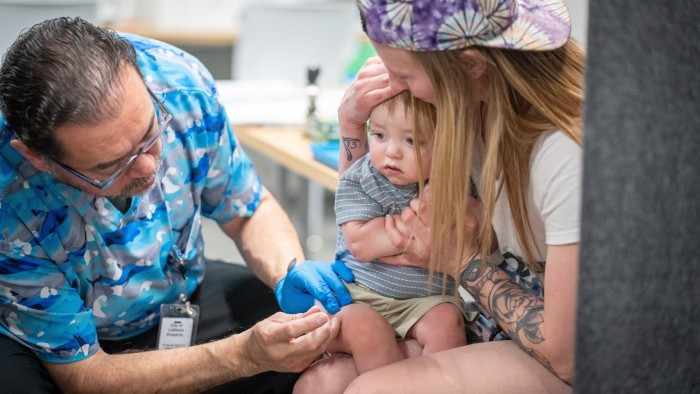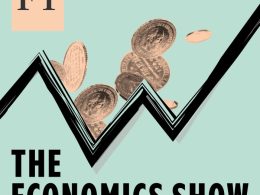Unlock the White House Watch newsletter for free
Your guide to what Trump’s second term means for Washington, business and the world
Measles threatens to become endemic in the US again due to falling inoculation rates, according to new research that will add to alarm over vaccine scepticism in President Donald Trump’s administration.
The potentially fatal virus could cause millions of cases if inoculation levels fall by 10 per cent, and re-establish itself in less than 25 years at current vaccination rates, according to modelling led by scientists from Stanford University.
US authorities under Robert F Kennedy Jr, health and human services secretary and a long-standing vaccine sceptic, have been criticised for their response to an ongoing measles outbreak in Texas. Health experts fear that the reluctance to unequivocally endorse vaccination could accelerate growing public hesitancy towards jabs for measles and other dangerous illnesses.
“With measles, we found that we’re already on the precipice of disaster,” said Mathew Kiang, lead author of the modelling study published in the Journal of the American Medical Association on Thursday. “When you’re talking about potentially thousands or millions [of cases], that’s unfathomable.”
Measles is a highly contagious viral condition that particularly affects children, can infect various organs and cause permanent damage such as blindness. In 2000, the US declared it had eliminated the disease, a milestone that authorities attribute to vaccination and a strong public health system for detecting and responding to cases.
But measles vaccination coverage among US children in kindergarten fell from 95.2 per cent in 2019-20 to 92.7 per cent in 2023-24 — below the 95 per cent threshold for effective herd immunity.
The modelling study examined scenarios for varying childhood vaccination rates for measles, rubella, polio and diphtheria. They used a simulation model to assess how the diseases might enter and spread within the US, taking into account estimates of disease arrival risk, demography and population immunity. They used childhood vaccination rates from data between 2004 and 2023 as a baseline.
The model predicted that, at current vaccination rates, measles could become endemic again in 20.9 years and lead to more than 850,000 cases over 25 years. A 10 per cent decrease in vaccination rates was forecast to lead to 11.1mn cases over the same period.
The study’s limitations include that it made simplified assumptions in the simulation of disease transmission, immunity, social mixing and demographic factors, the authors said. Its forecasts might also be affected by changes in behaviour on vaccine uptake triggered by disease outbreaks.
“Travellers importing a disease are like matches, and US under-vaccination is the tinder,” said Kiang, an assistant professor of epidemiology and population health at Stanford. “With measles, you’re throwing a lot of matches in, and eventually something is going to happen.”
More than 620 cases have been documented in Texas since late January, the overwhelming majority of them either confirmed unvaccinated or with no documentation to say they have been jabbed. Two children have died during the outbreak.
Since the outbreak began, Kennedy has made statements about measles and vaccination that are unsupported by scientific evidence. He claimed two Texas doctors had “treated and healed” 300 measles-infected children, even though there is no known cure. He said the effectiveness of the MMR vaccine to combat the disease “wanes very quickly”, whereas in fact its protective effects are life-long for most people.
Public confidence in the MMR vaccine in the US and elsewhere was damaged by now discredited 1998 research linking it to the development of autism.
The Stanford-led modelling study found the other diseases analysed were unlikely to become endemic should current vaccination rates be maintained. But if routine child vaccination plunged by 50 per cent, millions of cases of rubella and polio would be likely, it warned.
Source link









